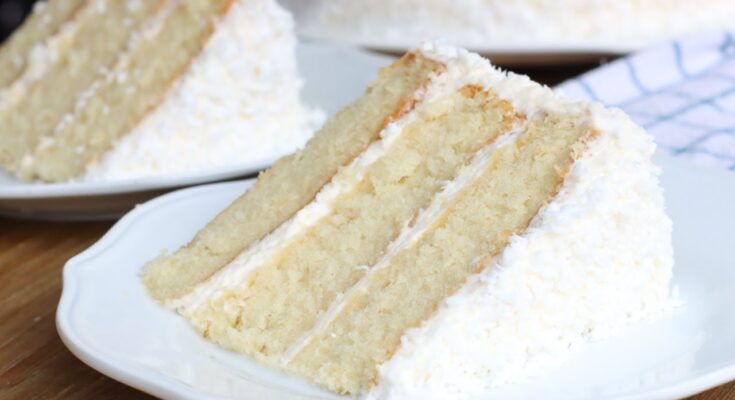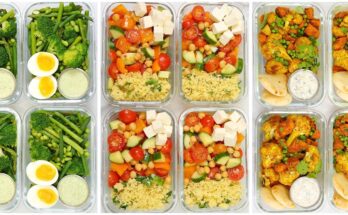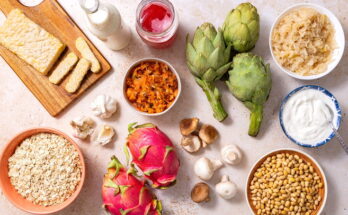Coconut Cake Recipe: There’s something magical about a moist, fluffy coconut cake that’s layered with creamy frosting and topped with a hint of tropical flair.
This classic dessert is perfect for any occasion, from birthdays to casual get-togethers. A treat that’s both decadent and refreshing, coconut cake has been a favorite for generations.
Ready to whip up your own? Let’s dive into this easy-to-follow guide.
Ingredients for Coconut Cake
Base Ingredients for the Cake
To bake a coconut cake, you’ll need:
- 2 ½ cups of all-purpose flour
- 2 teaspoons of baking powder
- ½ teaspoon of baking soda
- ½ teaspoon of salt
- 1 cup of unsalted butter (softened)
- 1 ¾ cups of granulated sugar
- 4 large eggs
- 1 teaspoon of vanilla extract
- 1 teaspoon of coconut extract
- 1 cup of full-fat coconut milk
- 1 cup of shredded sweetened coconut
Frosting Ingredients
- 2 cups of powdered sugar
- 1 cup of unsalted butter (softened)
- ½ cup of cream cheese
- 2 teaspoons of coconut extract
- 1–2 tablespoons of heavy cream
- Additional shredded coconut for garnish
Optional Toppings and Decorations
- Toasted coconut flakes
- Fresh fruit, like pineapple or strawberries
- Edible flowers for an elegant touch
Tools and Equipment Needed
Baking Essentials
- Mixing bowls
- Electric mixer or stand mixer
- Measuring cups and spoons
- Rubber spatula
Specialty Tools for Coconut Cake
- 9-inch round cake pans (2–3 pans)
- Cooling racks
- Offset spatula for frosting
- Cake stand for serving
Step-by-Step Guide to Making Coconut Cake
Step 1: Preparing the Ingredients
Start by preheating your oven to 350°F (175°C) and greasing your cake pans with butter or nonstick spray. Dust them lightly with flour to prevent sticking. Gather all ingredients and measure them accurately—precision is key to a perfect cake.
Step 2: Mixing the Cake Batter
In a large mixing bowl, cream the butter and sugar together until light and fluffy. Beat in the eggs one at a time, followed by the vanilla and coconut extracts. In a separate bowl, sift together the flour, baking powder, baking soda, and salt. Gradually add the dry ingredients to the wet mixture, alternating with coconut milk. Finally, fold in the shredded coconut for added texture.
Step 3: Baking the Cake Layers
Pour the batter evenly into the prepared cake pans, using a spatula to smooth out the tops. Place the pans in the preheated oven and bake for 25–30 minutes, or until a toothpick inserted into the center comes out clean. Avoid overbaking, as it can dry out the cake. Once done, remove the pans from the oven and allow the cakes to cool in their pans for 10–15 minutes. Then, carefully transfer the layers to a cooling rack to cool completely.
Step 4: Preparing the Frosting
While the cake layers cool, make the frosting. Using an electric mixer, beat the butter and cream cheese together until smooth and creamy. Gradually add the powdered sugar, one cup at a time, beating on low speed to avoid a sugar cloud. Mix in the coconut extract and add heavy cream as needed for the desired consistency. The frosting should be fluffy yet sturdy enough to spread.
Step 5: Assembling and Decorating the Cake
Place one cooled cake layer on a cake stand or serving plate. Spread a generous amount of frosting evenly over the top. Add the second layer and repeat the process, ensuring even coverage. If you have a third layer, stack and frost it in the same way. Once assembled, frost the sides of the cake. Press shredded coconut gently onto the frosting for a classic coconut cake look. For added elegance, sprinkle toasted coconut flakes on top or decorate with fresh fruit.
Tips for the Perfect Coconut Cake
Common Mistakes to Avoid
- Skipping the room temperature ingredients: Ensure your butter, eggs, and cream cheese are at room temperature for smooth mixing.
- Overmixing the batter: Once you add the dry ingredients, mix just until combined to avoid a dense cake.
- Neglecting the cooling process: Frosting a warm cake can result in a melty mess. Patience pays off here!
Substitutions and Variations
- Gluten-free version: Use a gluten-free all-purpose flour blend.
- Dairy-free version: Substitute butter with vegan butter and use coconut cream instead of cream cheese.
- Flavor twist: Add a layer of pineapple jam between the cake layers for a tropical pina colada vibe.
Storing and Serving Coconut Cake
Proper Storage Techniques
Store your coconut cake in an airtight container to keep it fresh. If kept at room temperature, it can last for up to 2 days. For longer storage, refrigerate the cake, but bring it to room temperature before serving for the best texture.
Creative Serving Ideas
- Pair the cake with a scoop of vanilla ice cream or a dollop of whipped cream.
- Serve slices with a garnish of fresh fruit or a drizzle of caramel sauce.
- Create individual cake jars by layering cake and frosting in mason jars.
Nutritional Information
Calorie Breakdown
A typical slice of coconut cake (1/10th of the cake) contains approximately:
- Calories: 450–500
- Fat: 22g
- Carbohydrates: 60g
- Protein: 4g
Important Nutrients
Coconut is rich in fiber and healthy fats, while the cake provides a dose of energy and a touch of sweetness for an indulgent treat.
FAQs about Coconut Cake Recipe
What ingredients do I need for a coconut cake?
To make a classic coconut cake, you will need all-purpose flour, granulated sugar, unsalted butter, eggs, baking powder, salt, coconut milk, vanilla extract, and shredded coconut. For an extra touch of flavor, consider adding a pinch of almond extract.
How do I ensure my coconut cake is moist?
To keep your coconut cake moist, use coconut milk in the batter, and be careful not to overbake it. Additionally, you can brush the baked layers with simple syrup before assembling to help lock in moisture.
Can I make this cake gluten-free?
Yes, you can make a coconut cake gluten-free by substituting the all-purpose flour with a gluten-free flour blend. Be sure to check that your baking powder and other additives are gluten-free as well.
What frosting pairs well with coconut cake?
A light and fluffy cream cheese frosting or a classic buttercream frosting are excellent choices. Both can be enhanced with a sprinkle of shredded coconut on top for added texture and flavor.
How long does coconut cake last?
A properly stored coconut cake can last up to a week in the refrigerator. For longer storage, consider freezing the cake. Wrap individual slices or the entire cake in plastic wrap and store in an airtight container to maintain freshness.
Can I add nuts to my coconut cake?
Absolutely! Adding nuts such as chopped pecans or walnuts to the batter or as a garnish can introduce a delightful crunch and nutty flavor that complements the coconut perfectly.
Conclusion
Coconut cake is a dessert that brings joy to any table with its fluffy texture, tropical flavors, and irresistible frosting. By following this step-by-step guide, you’ll master the art of baking this classic treat. Whether you’re a beginner or a seasoned baker, this recipe is sure to impress. So, grab your ingredients, preheat your oven, and get ready to indulge in a slice of paradise.



